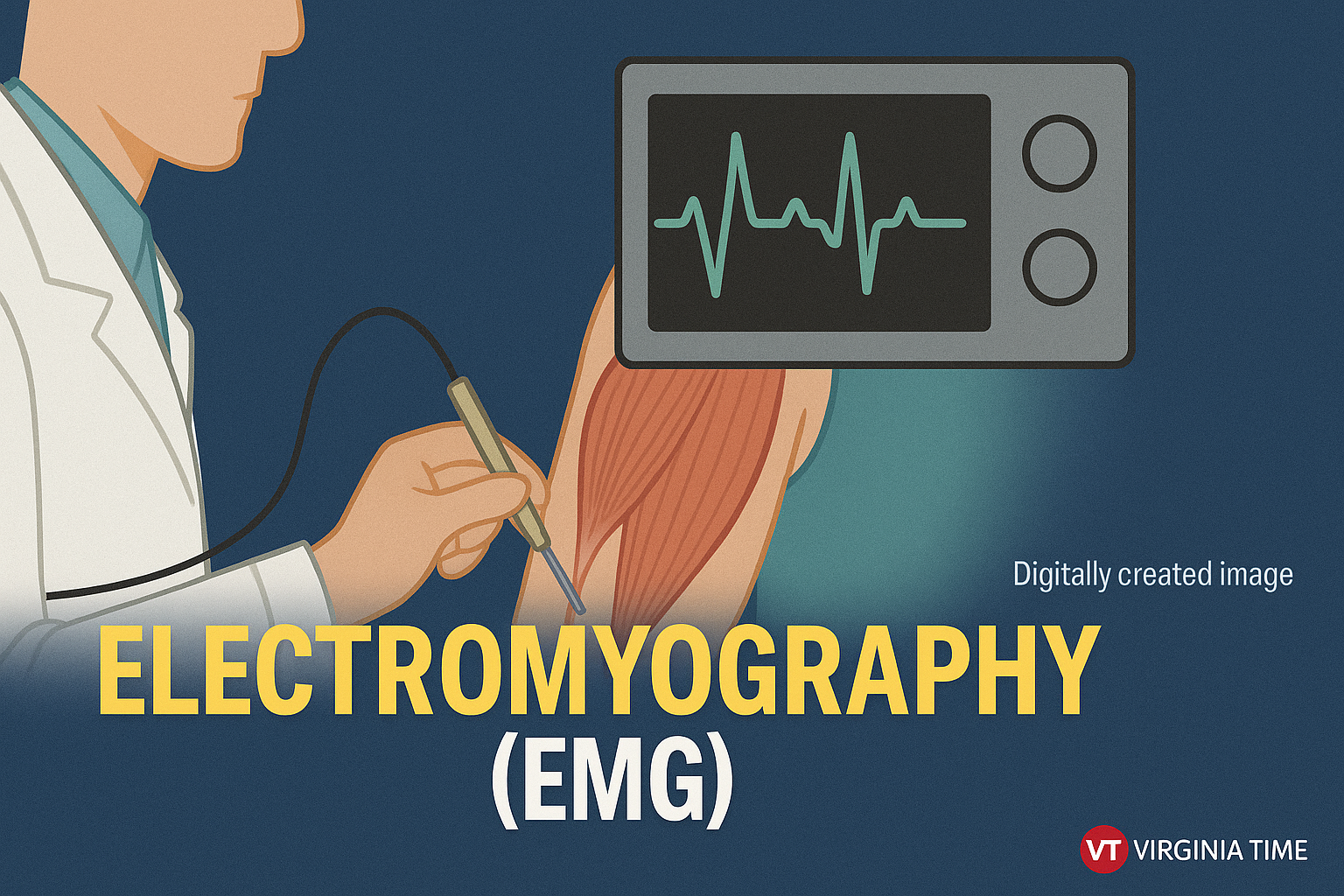- EMG measures electrical activity in muscles during rest and contraction.
- NCS assesses the speed and strength of electrical signals through nerves.
- Both procedures help diagnose neuromuscular conditions and nerve damage.
- Minimal preparation is needed; procedures are outpatient and safe.
- Conducted by neurologists or trained technologists, results guide further treatment.
What Is Electromyography (EMG)?
Electromyography (EMG) is a diagnostic procedure used to measure muscle response or electrical activity in reaction to nerve stimulation. It helps detect neuromuscular abnormalities and is commonly performed when patients experience muscle weakness, numbness, or tingling sensations.
During the test, fine needle electrodes are inserted into the muscle. These electrodes record electrical activity, which is then displayed on an oscilloscope as waveforms. An audio amplifier may also allow this electrical activity to be heard. Muscle tissue at rest should produce no signals after initial insertion activity.
The patient may be asked to contract the muscle—gently or forcefully—so that the size and shape of the resulting action potentials can be assessed. This reveals how the muscle responds when the nerve signals reach it, providing insight into neuromuscular function.
How Is EMG Performed?
Before the Procedure
- Fasting is generally not required.
- Stimulants like coffee, tea, or cola may need to be avoided for a few hours prior.
- Inform your doctor of all medications and supplements.
- Do not apply lotions or oils to your skin on the day of the test.
- Wear clothing that allows access to the test area.
- Notify your doctor if you have a pacemaker or other implanted devices.
During the Procedure
- The test is often done in an outpatient setting and may follow a nerve conduction study.
- You’ll be asked to remove metal accessories and wear a gown if needed.
- A neurologist identifies the target muscle and inserts a sterile needle electrode.
- Five or more insertions may be necessary.
- You’ll be asked to relax and then contract your muscle.
- Electrical activity is recorded and analyzed both visually and audibly.
After the Procedure
You may experience mild muscle soreness for a day. If you notice increasing pain, swelling, or pus at the insertion site, notify your doctor. Follow any additional instructions based on your specific health condition.
What Is a Nerve Conduction Study (NCS)?
Nerve Conduction Study (NCS) is a related procedure that evaluates the speed and strength of electrical signals traveling through a nerve. It is commonly performed alongside EMG to provide a comprehensive picture of nerve and muscle health.
Before the Procedure
- No fasting or sedation is typically needed.
- Avoid lotions or oils on the day of testing.
- Inform your doctor about any medications you are taking.
- Dress appropriately for access to the testing area.
During the Procedure
- The test can be conducted on an outpatient basis.
- You will sit or lie down comfortably.
- Recording and stimulating electrodes will be placed on the skin.
- A mild, brief electrical impulse is delivered to the nerve.
- The resulting electrical activity is displayed on an oscilloscope.
- You may feel slight discomfort during stimulation.
After the Procedure
Electrode paste is cleaned off, and normal activities can typically be resumed immediately unless your doctor advises otherwise.
Why EMG and NCS Matter
Both EMG and NCS are pivotal in diagnosing conditions such as carpal tunnel syndrome, peripheral neuropathy, radiculopathy, and muscular dystrophy. These tests enable neurologists to determine the extent of nerve or muscle damage and guide effective treatment strategies.
Final Thoughts
Understanding EMG and NCS can help demystify the diagnostic process for patients experiencing nerve and muscle symptoms. While the procedures may sound technical or intimidating, they are generally well-tolerated, safe, and offer critical information for proper treatment.
This article is based on the report by Johns Hopkins Medicine, published for educational purposes.
A global media for the latest news, entertainment, music fashion, and more.















